“Beyond Brilliance: Jewelry Highlights from the Collection” is a celebration of the vastness and richness of the MFA Boston collection. From humble to extraordinary, each object illustrates the timeless human desire to express oneself through fashion, collect precious treasures, and unleash creativity. From ancient artifacts to exquisite contemporary designs, this presentation seamlessly weaves together objects spanning 4,000 years. Each piece tells a unique story, revealing how jewelry has always been a powerful means of communication and a reflection of the art and culture of its time. With over 150 objects on display, you’ll encounter treasures such as an ancient Egyptian broad collar necklace, 19th-century masterpieces by Castellani and Carlo Giuliano, and iconic designs from renowned brands like Marcus & Co., Tiffany & Co., and Bulgari. But the journey doesn’t stop there. Prepare to be dazzled by the brilliance of René Boivin’s starfish brooch from 1937 and the exquisite fashion jewelry by Chanel, Dior, and Elsa Peretti. We also proudly showcase new acquisitions of contemporary jewelry by Christian and Yasmin Hemmerle, Wallace Chan, Anna Hu, and Feng J. These contemporary pieces add a fresh perspective to the collection, highlighting the ever-evolving nature of jewelry design. Join curator of “Beyond Brilliance” Emily Stoehrer as she guides you through this enchanting exhibition, unraveling the stories behind each exquisite piece.
“Beyond Brilliance: Highlights from the Jewelry Collection,” May 18, 2024.
Will you give us a description of “Beyond Brilliance: Highlights from the Jewelry Collection”?
The Museum of Fine Arts, Boston is one of the few art Museums in the country with a dedicated gallery for jewelry––the Kaplan Jewelry Gallery. “Beyond Brilliance” will be the first exhibition in the newly renovated space. It features 150 highlights from the Museum’s world-renowned jewelry collection. The gallery spotlights ancient artifacts, fine jewelry, costume jewelry and jewelry by contemporary artists while exploring themes of decorative arts, adornment and messaging.
What has your experience been like curating for MFA?
I have such a unique job––in fact, I’m the only dedicated Curator of Jewelry at an art museum. I have the privilege of overseeing a collection that spans 6,000 years and includes more than 22,000 objects. It’s one of the best jewelry collections in the country.
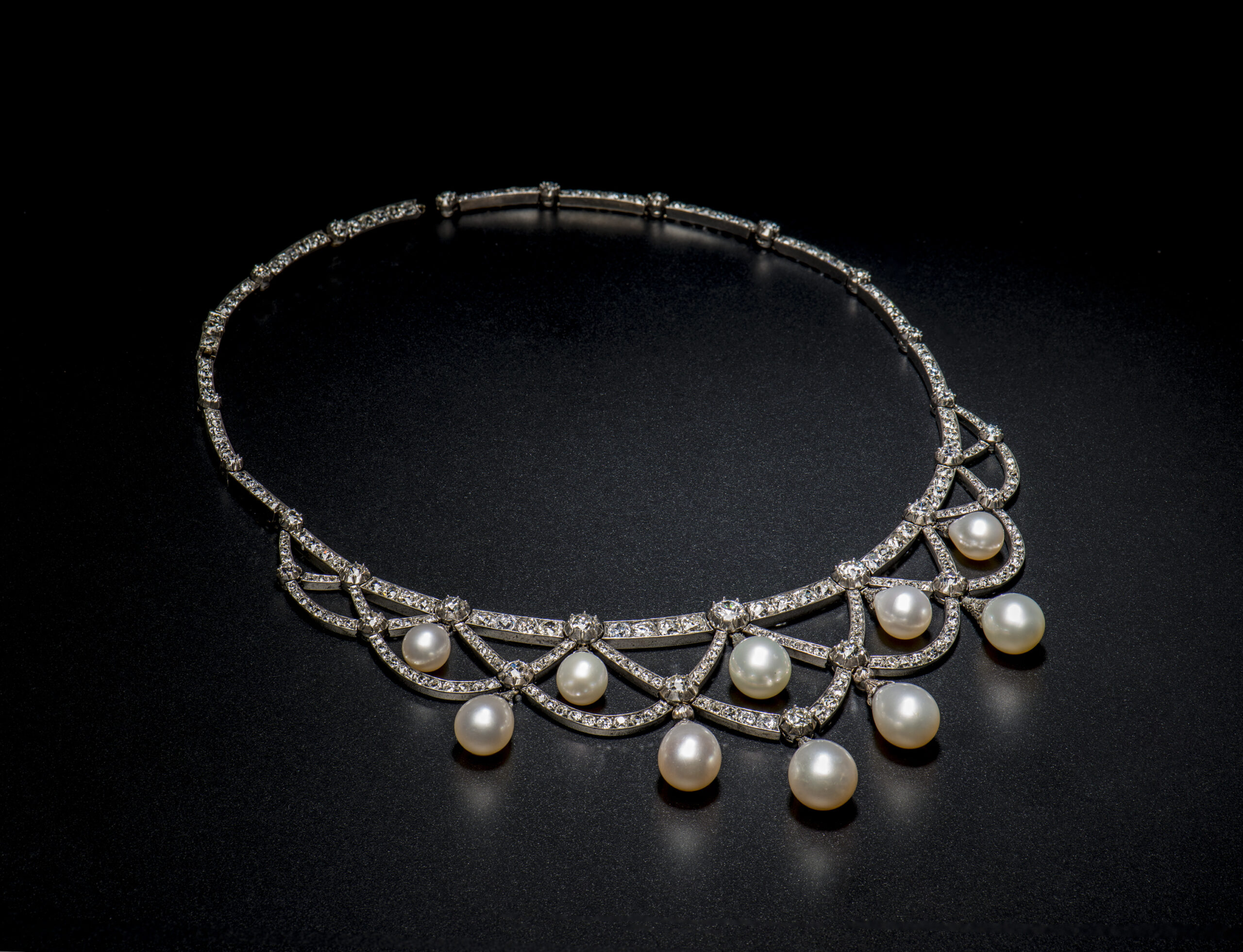
Are there any particular pieces that are your favorite in the exhibit?
It’s hard to pick a favorite, but I’m especially excited to feature new acquisitions of contemporary jewelry by Christian and Yasmin Hemmerle, Wallace Chan and BHAGAT.
What was the experience like curating the “Beyond Brilliance” exhibition? How did you go about curating the exhibit?
With a collection that spans nearly every curatorial department at the MFA, this project was all about collaboration. As I begin to think about what objects would go into the gallery I met with colleagues to discuss the most important works in the collection and over time we narrowed the list. Once the works of art were selected I began thinking about the themes that run throughout the collection, and throughout the history of adornment, as a way to organize the objects.
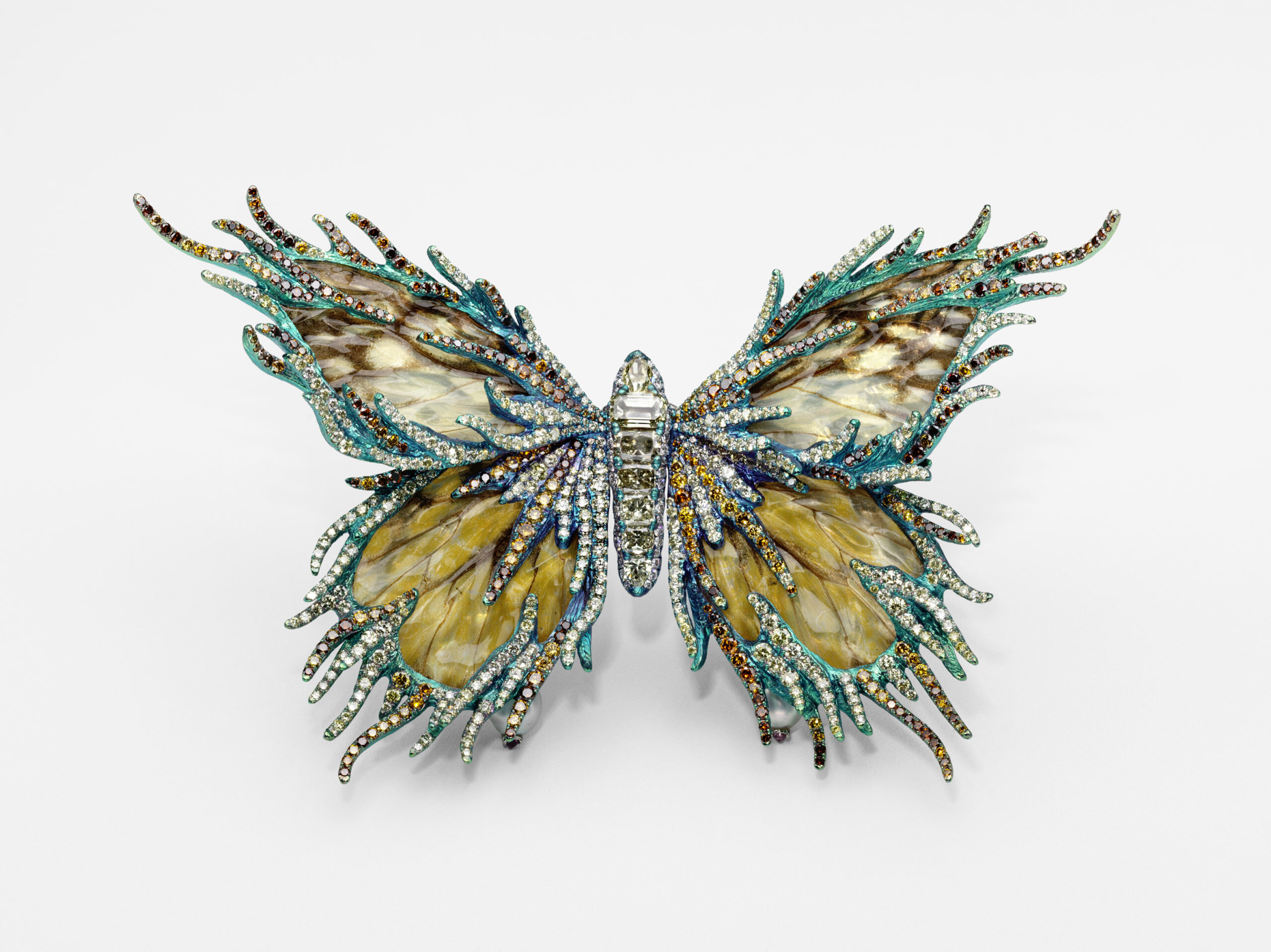
What is the overarching theme of the exhibition?
It’s an opportunity for visitors to see highlights from our collection. With ornaments crafted over 4,000 years and reflecting global cultures, Beyond Brilliance: Highlights from the Jewelry Collection champions the great depth and breadth of the MFA’s collection.
What do you want people to take away from the exhibition?
Jewelry tells many stories, but at its core, jewelry history is human history. It is the earliest art form with examples dating back more than 100,000 years. In this gallery, the oldest object was made 4,000 years ago, while the most recent left the workshop in February 2024. The array of materials and the ingenuity on view is incredible, from shell and glass to gold and diamonds to plastic and hair— yet each work of art speaks to the deeply human desire to adorn our bodies. I hope visitors look closely to observe the fine details and ponder the many hands involved in making jewelry— from the creativity of the designer, the technical mastery of the craftsperson, the skill of the lapidary who cut the gemstone, and the lifestyle of the people who lived with these objects.
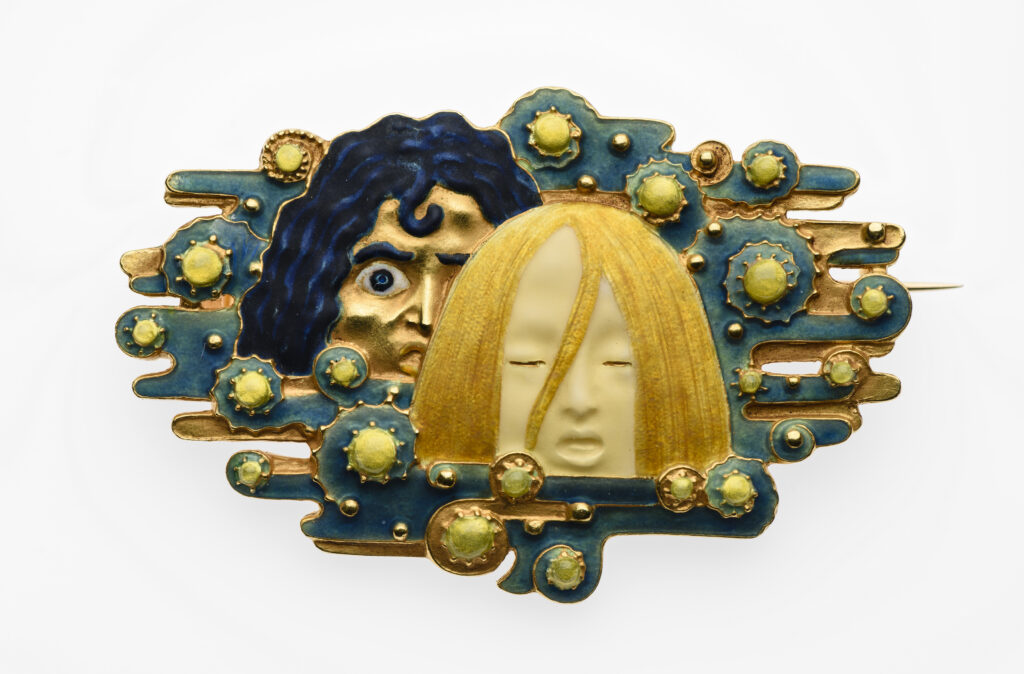
Did anything surprise you while curating the exhibit?
A project like this is full of surprises. Working closely with out conservators, I spent the last few years continuously learning about the materiality of these works of art. And the research process was equally exciting as I explored artists, techniques, materials across time and cultures.
What are some differences and similarities between the ancient & more contemporary pieces showcased in this exhibition?
The exhibition is organized around three themes: decorative arts, adornment, and messaging. One of the most exciting things about arranging the objects this way – as opposed to chronically or by maker – is the conversations that arise from placing very different objects together. For example, one case of jewelry examines the various ways jewelry artists have been inspired by the natural world with objects spanning hundreds of years.
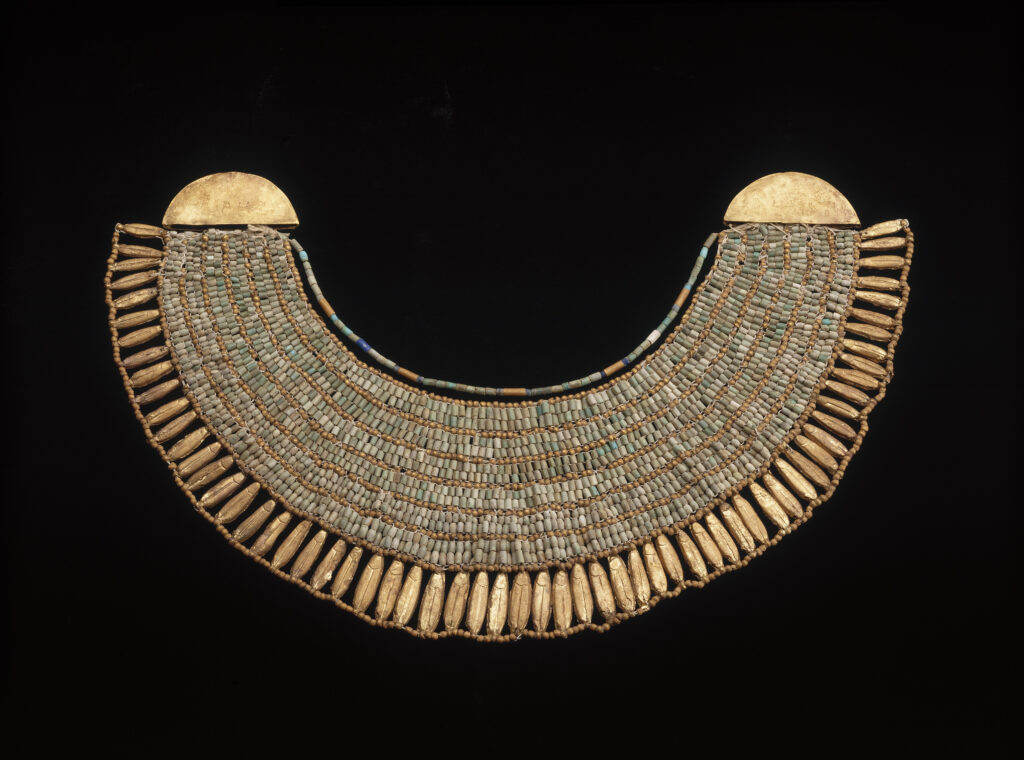
Will you give us insight into how jewelry communicates strong messages about its wearer and exemplify the art and culture of its time?
A fan favorite is a brooch made in the midst of the bicycle craze that swept England in the 1890s. At the height of the suffrage movement, the bike became a symbol of women’s independence. The bicycle design depicted in this brooch is known as a “diamond-frame machine.” The brooch is designed with great accuracy and attention to detail, with movable handlebars, wheels, and pedals. With the wheels the designer was having some fun with the bike’s name, creating wheels featuring brilliant cut diamonds. It even has a small red ruby reflector on the front and a brown enamel seat that mimics leather. This model of bicycle was likely ridden by a woman wearing a “rational” cycling dress. Offering safety and comfort, this costume included a voluminous garment known as a bifurcated skirt. Among the earliest “pants” designed for women, the garment protected the wearer’s modesty as she stepped over the high crossbar. The division of each leg meant the wearer didn’t need the slanted bar to accommodate the fabric of her skirt. This was a brooch designed for the “New Woman”— independent and on the cutting edge of female cycling fashion, she wore the brooch to express her feeling of empowerment.
What are examples of designers featured in the exhibit?
Highlights include an ancient Egyptian broad collar necklace; 19th-century works by Castellani and Carlo Giuliano; 20th-century designs by Marcus & Co., Tiffany & Co., and Bulgari; René Boivin’s starfish brooch from 1937; and fashion jewelry by Chanel, Dior, and Elsa Peretti.
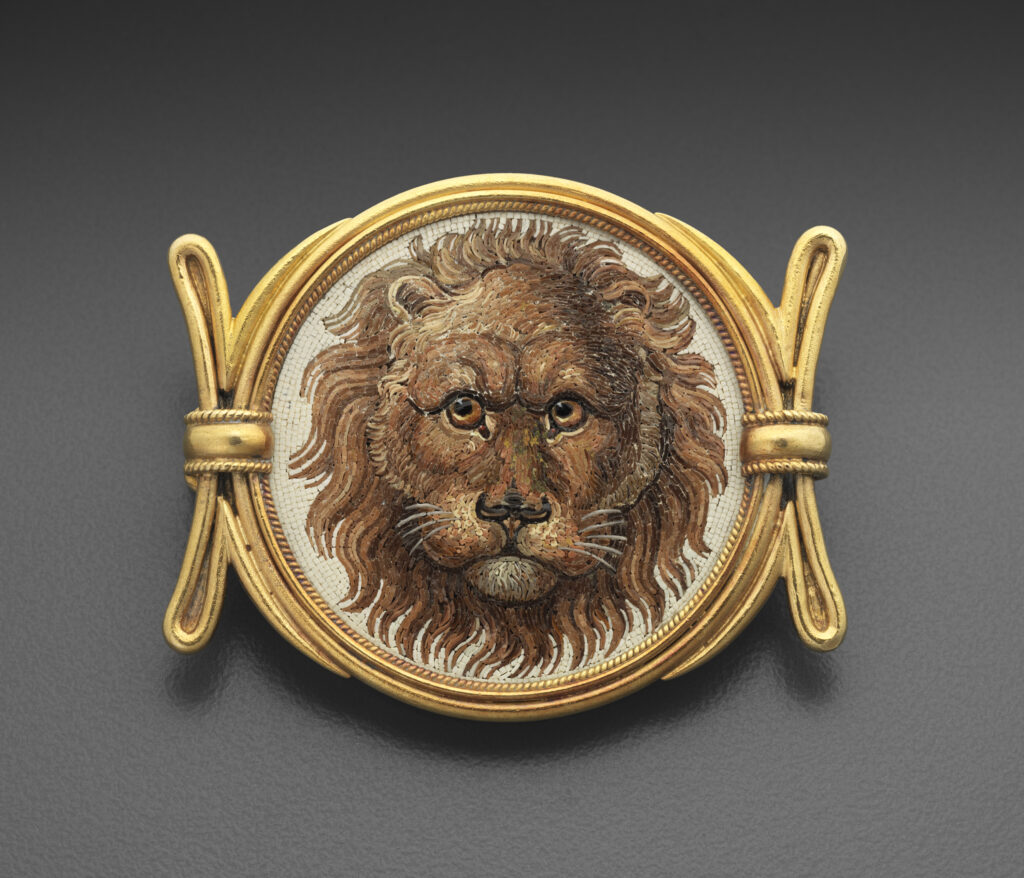
What is next for you?
Beyond Brilliance the book! Once the gallery opens on May 18 I will begin working on a related book on the collection that will be published by the MFA in Fall 2025.
Where can people find you?
At the MFA or on Instagram at @jewelcurator.
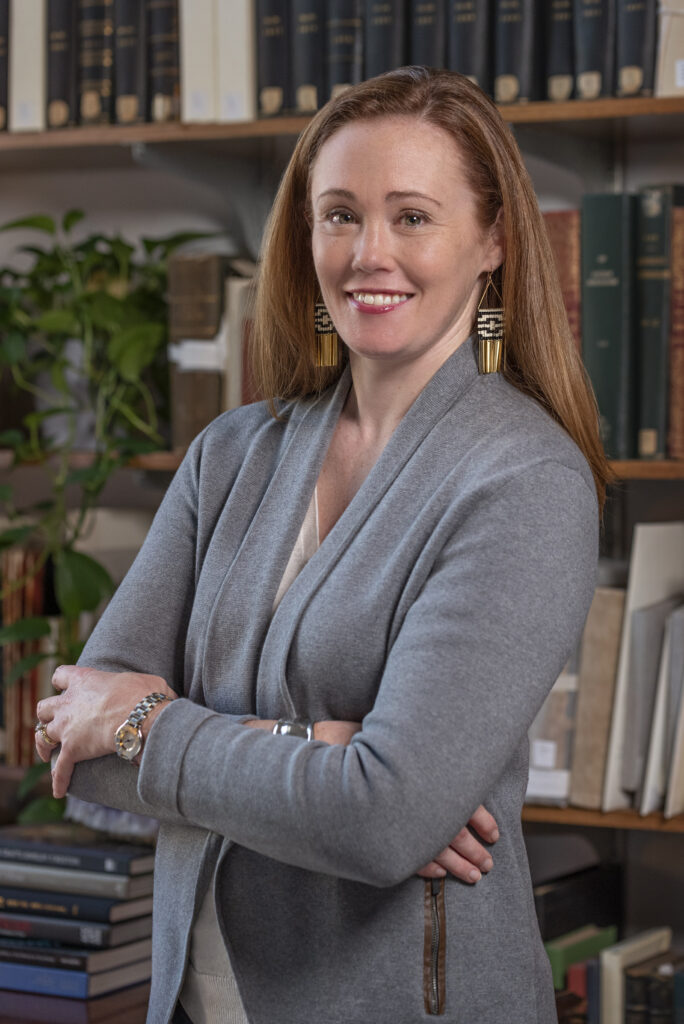
The Style That Binds Us
BY

you said: